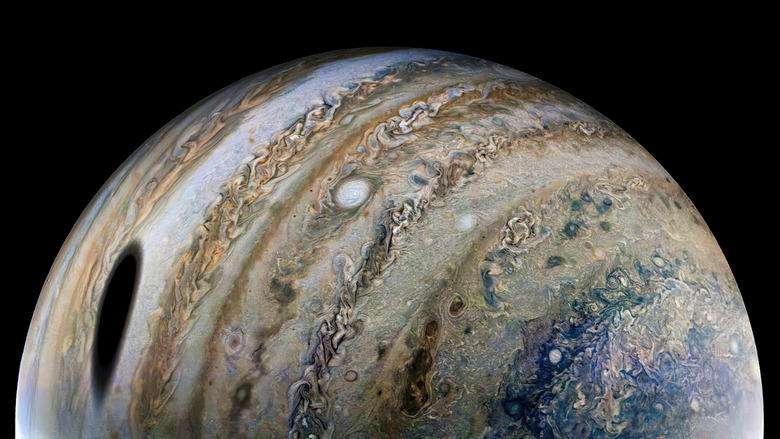Juice: Everything You Need To Know About The ESA's Jupiter Icy Moons Explorer Mission
The European Space Agency is preparing a spacecraft to embark on an eight-year-long journey to Jupiter, where it will study the gas giant's moons for signs of habitability. The Jupiter Icy Moons Explorer (Juice) mission will be one of the most in-depth studies scientists have committed of Jupiter's icy moons.
It's exciting that we'll finally learn more about the possible habitability of the moons surrounding Jupiter. However, before we can start diving through all that data, the spacecraft must make its long trip out to the Jupiter system. Here's what we know about the Juice mission, one of 2023's biggest space missions.
Ariane will power the liftoff: The Juice spacecraft will hitch a ride on an Ariane 5, according to the ESA, carrying it from Europe's Spaceport in Kourou to orbit around our Sun.
A long journey ahead: While space lovers can tune into Juice's launch next week — it's currently planned for an April 13 launch — the mission won't reach Jupiter for around eight years. It will complete at least four orbits of the Sun during its journey.
Gravity assistance is key: Jupiter is over 500 million miles from Earth. While that's relatively small in cosmic measurements, it's still far from our planet. To help the Juice spacecraft reach Jupiter's icy moons, the ESA will utilize gravity assists around Earth and Venus.
Jupiter arrival in 2031: Once it has completed multiple Earth gravity assists, the Juice mission spacecraft will continue its transfer to Jupiter through 2029 and 2031, arriving at the Jupiter system itself in mid-2031. NASA expects to deorbit the ISS around this time, making it a historic year for space lovers.
Studying Jupiter's moons: The main goal of the Juice mission is to study Europa, Ganymede, and Callisto. Jupiter is home to almost 100 satellites, but these three moons are believed to house immense subsurface water reserves, providing potential signs of habitability.
Multiple flybys: The Juice mission will complete multiple flybys of Jupiter's moons as it undergoes its research. During this time, astronomers will gather more data than ever about Jupiter and its biggest moons, giving us more insight into whether these satellites hold the secrets we believe they do.
